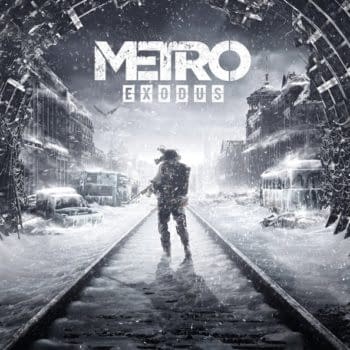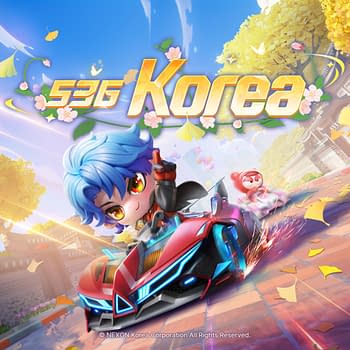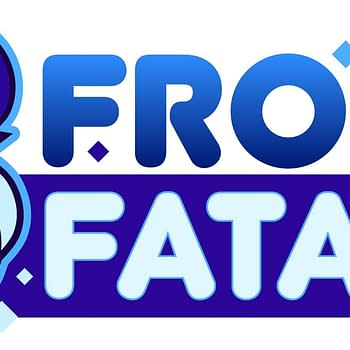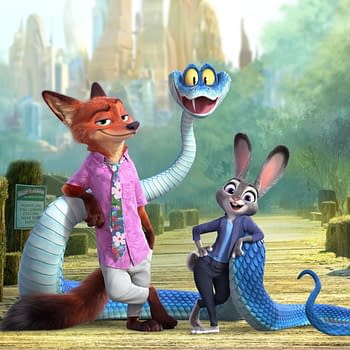Posted in: Games, Movies, Video Games | Tagged: DotA 2, entertainment, games, halo, Halo 5, Halo 5: Guardians, League of Legends, video games
ESports Are Bridging The Gap Between Art And Sport, But Is That A Good Thing?

This week 343 director Josh Holmes was talking about streaming features for Halo 5. In the interview with IGN, he said:
When you think about Halo, it's such a tailor-made experience for eSports, especially with that competitive edge, getting back to the level playing field and everything. So we put a lot of focus on surrounding features.
In a way this makes sense and it's commendable. Watching players engage competitively is on the rise in a big way. There is a legitimate hunger for games as 'sport'. An eight figure hunger in fact. That is before you even consider the millions of players who have no interest in professional gaming and just like to play online. Competitiveness is on the rise in a big way in gaming.
While the reasoning to design the game with eSports in mind is totally legitimate, it does throw up an interesting question that has lingered on my mind for a while. For as long as games have been telling affecting and emotionally resonant stories, many have talked about the 'Citizen Kane' of gaming and for even longer than that, about games as art. Each year, narrative is pushed in gaming to support this claim. In the last few years, games like Portal 2, Thomas Was Alone, The Walking Dead, Journey, Spec Ops: The Line, Bioshock Infinite and The Last Of Us have provided us with extraordinary experiences. However, with professional gaming on the rise and now games as big as Halo 5: Guardians being designed specifically with eSports in mind, where does that leave the talk of art? Can something be a piece of art and a sport at the same time? (Of course, in this case, it's mostly just the multiplayer aspects of Halo that are being altered for 'sport', but I think it is a fun spark to start a broader debate. So I'm using it and there ain't nothing you can do to stop me!)

Taking a rudimentary approach, the Oxford Dictionary definition of sport is:
An activity involving physical exertion and skill in which an individual or team competes against another or others for entertainment.
The definition of art is:
The expression or application of human creative skill and imagination, typically in a visual form such as painting or sculpture, producing works to be appreciated primarily for their beauty or emotional power.
There is definitely a crossover between the definitions. Within sport there's plenty of potential for "creative skill and imagination". Be it a touchdown from Calvin Johnson, a free kick from David Beckham or a back hand by Andy Murray, there is a huge amount of skill and imagination put into playing sports. Those moments of brilliance on a playing field can absolutely cause "emotional power". This, counting professional gaming as a sport, should relate to players in the MLG and DOTA championships too.
With all that considered, how does gaming being a sport affect the artistic design of games? Video games are packages of many art forms in the form of design, writing, music, as well as many other fields. Although, sport is specifically played by a rigid rulebook. You couldn't play one without. So, what happens when you start to design a rudimentary rule set for a game series and then use those other art forms as accoutrement?
It brings an interesting new dynamic into game design, but in my eyes, it is something more akin to an NFL game broadcast rather than the Mona Lisa. The focus is on the game which is supported by on screen graphics, commentating and orchestral music at breaks. It all acts as service for the play, but they are separate parts and not an artistic whole. It can be effective at creating an emotional reaction, but at its base the broadcast is confined to those core set of rules. When looking back to the dictionary definitions, the difference between sport and art is that sport is bound to a set of rigid rules and art thrives on creativity to constantly break boundaries. This creates a tensions when the two mix.

Halo has no reason or need to change its core dynamics as a game or a sport yet mind. It sells millions of copies each release and Halo 5 is going to do just fine despite whether it focuses more on creating a piece of art or a sport. My worry is that games are such a young medium that they are constantly changing, improving and pushing the boundaries. It is an incredibly fast moving entertainment. Allowing a stringent set of rules into that space can be problematic.
I'm not saying a game has to be one or the other either. But…well let me put it like this. In the late 1990s, one of the greatest console shooting experiences at the time was GoldenEye on the N64. Going back to that game now is an archaic experience. In another ten years time, first person shooters could be advancing their gameplay to integrate with their stories better. Would Halo's gameplay able to withstand that test of time at a competitive level, or would it feel just like GoldenEye does today?
Luckily, a main Halo game only comes every few years, allowing for time to pass as the development team forward gameplay in those breaks. But look at another franchise known for competitive play like Call of Duty. It does have yearly sequels. We are beginning to see more and more of this, what with the annualisation of Assassin's Creed and Battlefield. These titles eventually come under fire for not innovating enough. Are these games being held back by trying to stick to a core set of rules that can't change drastically without destroying their 'sporting elements'? Refinements are great and it's certainly financially sustainable for a time, but I don't think it's an endless loop. That is the real quandary, and it leaves franchises who are appealing directly to competitive gamers in danger. Improving on an older system year on year can certainly work as we have seen, but even Call of Duty's sales seem to be plateauing while its competitors who do change their play to keep things fresh will likely thrive. I'm not sold appealing as a sport for most games is a long term plan.
The question will no doubt be answered by money and success. Can a rudimentary system made to appeal to competitive gamers be financially viable and artistically rewarding after a long time? I suppose we will be finding out soon enough. For the first time ever, it seems that art and sports are crossing over in a way where the two might have to find common ground with one another. Is that really possible? The eighth generation of gaming is looking like a great negotiating table to see if the two can co-exist. I don't think this is a huge problem right now, but we are sowing the seeds for the future today, and it certainly is interesting to think about. In the end I just want great experiences, but as some one who prefers succinct narrative experiences I find this a growing consideration.



















